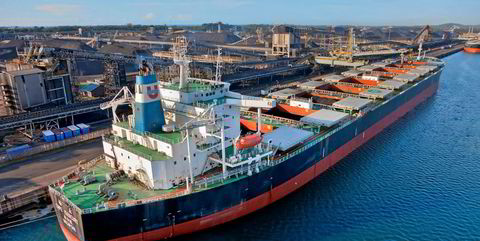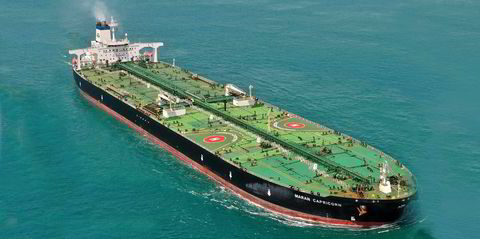French utility EDF and mid-scale liquefaction specialist GasFin Development are set to take a final investment decision next year on two regasification projects in the French Caribbean.
Roland Fisher, chief executive of Luxembourg-registered GasFin, said front-end engineering and design work has been completed with first gas targeted for 2016 from floating storage and regasification units (illustrated) installed off the islands of Guadeloupe and Martinique.
He said EDF, which owns oil-fired power plants on each of the two islands, approached GasFin to see if it could access gas to provide feedstock for the facilities.
GasFin agreed in early 2011 and, with FEED work now complete, the project partners are expecting permit approvals by the end of this year for the two newbuild FSRUs to be located off the islands.
The permitting process is taking longer than envisaged originally, delaying first gas from 2015.
“We will provide EDF with the infrastructure and a fixed cost, long-term service contract against which EDF will buy LNG. We would shift, store, regasify and send out the LNG at its request to the power plants,” said Fisher.
Key technical challenges to be addressed on the FSRUs included engineering the facilities and their spread mooring systems to be hurricane proof, and designing them to be on location for 25 years without docking.
Bureau Veritas carried out classification work on the units, which have a storage capacity of 25,000 cubic metres and are the first of their kind in the mid-scale LNG business, said Fisher.
Other companies involved in the FSRU design were Technip on the riser system and Promoor on moorings. TGE Marine, part-owned by GasFin, focused on hull, machinery and process plant design.
It is unclear which shipyards GasFin has approached to build the vessels.
LNG carriers would ship about 400,000 tonnes per annum from Trinidad, a round trip of five or six days, to the FSRUs moored just seven kilometres from the power plants on each island.
Vaporised gas would be sent to the power plants, which currently run on expensive and polluting heavy fuel oil, via subsea pipelines.
Each FSRU, 110 metres long by 32 metres wide, would handle up to 50 tonnes per hour of LNG from a tanker moored side by side and using conventional transfer technology.
“Many markets sensitive to burning oil and keen to switch to gas” could benefit from similar mid-scale projects, said Fisher, highlighting Reunion and Mauritius in the Indian Ocean as just two examples.
Future markets include other islands in the Caribbean such as Dominican Republic, Puerto Rico, Bahamas, Jamaica, Barbados, St Lucia, Cayman Islands, Bermuda, Aruba and Curacao, Grenada plus St Barts/St Martin.
Demand across these islands ranges from 1 million tpa in Jamaica to 50,000 tonnes in Grenada and surrounding islets.




